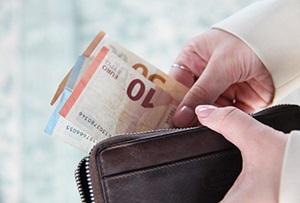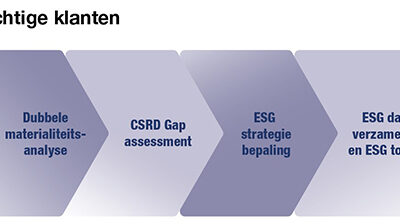Which financial moves can you – as an entrepreneur or DGA – still make before 1 January 2020 so that you end the year in the smartest possible way? Check out these ten different tips.
1. Make optimum use of the allowance in the labor costs scheme (WKR)
 This year you should also pay out allowances and benefits to your employees that are tax-free up to an amount of 1.2% of the total wage bill of your company. Make optimal use of this allowance and remember that next year this allowance amounts to 1.7% and 1.2% of the excess for the first € 400,000 of your wage bill. If you are running out of allowance for this year, it is better to postpone any reimbursements and provisions until 2020. If you exceed the allowance, as an employer you will pay 80% tax on the excess. Even as a director and major shareholder (DGA), you may use the allowance in the WKR.
This year you should also pay out allowances and benefits to your employees that are tax-free up to an amount of 1.2% of the total wage bill of your company. Make optimal use of this allowance and remember that next year this allowance amounts to 1.7% and 1.2% of the excess for the first € 400,000 of your wage bill. If you are running out of allowance for this year, it is better to postpone any reimbursements and provisions until 2020. If you exceed the allowance, as an employer you will pay 80% tax on the excess. Even as a director and major shareholder (DGA), you may use the allowance in the WKR.
2. Pay dividends out this year
In 2020 the tax rate for box 2 will increase from 25 to 26.25%. From 2021 a further increase to 26.9% will apply. It may therefore be worthwhile to make any possible dividend payment before 2020, especially if you use the dividend for expenses or use it to repay a loan. Keep in mind that if you do not spend it before 1 January 2020, you will then pay tax on private dividends as per box 3. How much tax you pay will depend on the size of your assets. This can total a maximum of 1.68% on your assets. You can prevent this by returning the dividend amount to be paid back as a share premium in box 2. Discuss the best options that apply to your situation with your adviser.
3. Purchase an electric car before 2020
If you plan to purchase an electric car, it is advisable to make your purchase before the end of 2019. From 2020, the 4% surcharge for electric cars will double to 8%. In addition, this 8% will only apply to the first € 45,000 of the sale price, instead of the first € 50,000 as is currently the case. You will have to pay 22% on the excess. The low additional tax liability applies for a period of 60 months from the date of first purchase.
4. Avoid a divestment surcharge
If you made use of the investment allowance in 2015 and you plan to sell the business asset again, you will have to deal with the divestment premium. This means that you must repay part of the investment allowance that you received at that time. You can prevent this by not selling the asset until 2020.
5. Take the allowance test into account
If you wish to be eligible for tax benefits, ensure that you do not have an excess of capital on January 1 of next year. For the healthcare allowance and child-related credits, the maximum for 2019 is € 114,776. If you have a partner, a maximum of € 145,136 applies. For the housing allowance a maximum of € 30,360 applies, rising to € 60,720 if you have a partner. The amounts for 2020 are not yet known but are expected to increase slightly. If you have assets above these limits and you are entitled to one or more allowances, it may be wise to reduce your assets. This can be done, for example, by repaying part of your mortgage or by bringing forward a planned large purchase. Entrepreneurs can also reduce the flow of assets from the company to their private funds, or transfer assets from their private funds back to the company. Take good advice if you need to take action to make sure you make the best possible decision for your situation.
6. Reduce your regular DGA salary
Cost reimbursements can be deducted from your regular salary. It does not matter whether these cost reimbursements are taxed or untaxed. Consider, for example, applying a tax-free allowance for meals or travel expenses. The addition for private use of the company car also counts towards your regular salary. For a car worth € 60,000 with a liability of 22%, you could reduce your salary by 60,000 x 22% = € 13,200. As a result of the reduction in salary (which must be at least € 45,000 in 2019) you will pay less tax in box 1.
7. Make any necessary submissions this year to avoid fines
If you do not declare income in box 2, you are likely to receive a subsequent claim and a fine. You can prevent or reduce any fine this year by submitting your return on time. This means that you still declare any income within two years after you made (or should have made) a declaration. If you declare the income after these two years, you will receive a lower fine. This ‘voluntary disclosure scheme’ now also applies to income that is taxed in box 2, such as dividends. This option will disappear in 2020.
The voluntary disclosure scheme now also applies to domestic income in box 3, but that too will disappear from 2020. Therefore, if you have withheld income from box 2, or not yet declared domestic income from box 3, you should submit this before the end of the year if you wish to avoid additional claims and fines.
8. Take advantage of the new allowances for bicycles
A new scheme for company bicycles will be introduced in 2020. Just as with cars, if it is available for private use a liability is calculated based on the recommended retail price of the bicycle. If the bicycle is available for commuting, it is automatically assumed that you also use the bicycle for private purposes. The liability for the bicycle will amount to 7% of the retail price. This liability is counted as your income and you must pay tax on it. The liability does not include any accessories that are purchased, such as waterproof clothing, panniers etc. The normal rules of the labor costs scheme apply here. You can respond to the new scheme by purchasing a bicycle from 2020 onwards. Until then, you can, use your own bicycle for business trips, including commuting, and charge € 0.19 / km for this to your profits. If possible, you can also still coordinate with the tax authorities to apply the 7% surcharge.
9. Final possibility for reduction in accrued self-managed pension funds
As of July 1, 2017, the accrual of your own pension has no longer been possible. As a DGA, you still have until 2019 to choose what you want to do with the pension that you have already accrued. You can:
- ‘stamp’ the pension tax free to its tax value, then surrender it to a 19.5% discount that does not include retrospective interest;
- silently and tax free ‘stamp’ your pension to its tax value, then convert it into a retirement obligation;
- freeze the existing pension under your own management.
The discount is applied to the tax value of the pension as it stood on 31st December 2015, or to the tax value on the surrender date if it is lower than the value was at the end of 2015. If you pay it off in 2019, you therefore owe income tax on 80.5% of the tax balance sheet value as of December 31st, 2015. The difference between the tax value on the surrender date and the tax value on December 31st, 2015 is 100% taxable. If you surrender in 2019 you will not be charged 20% retrospective interest.
10. Reduce your assets in box 3
If you have a lot of private assets, you must pay tax on them in box 3. This tax increases as you acquire more capital. In 2019, you will pay 1.68% tax on taxable capital of more than € 989,736, regardless of the return achieved. With a high level of private capital, it can therefore be worthwhile to use part of it within your company. This means you will pay less tax in box 3.


